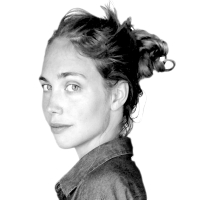Plus-size retailer Lane Bryant launched a splashy new lingerie ad campaign this week, a marketing ploy attacking Victoria’s Secret with a hashtag that quickly went viral on social media.
Women on Twitter whooped and cheered: “Damn, those #ImNoAngel girls are GORGEOUS! So proud of them!”
“Another intimate apparel company offering something that Victoria Secret can’t: Reality.”
ADVERTISEMENT
THE #ImNoAngel CAMPAIGN IS SO IMPORTANT WOW.
It works every time: A brand makes a statement about beauty standards in an ad campaign, slaps a hashtag on it, and gleefully watches consumers rally around their advertising activism. Is this popular feminism, or just a canny marketing ploy working under the guise of popular feminism?
In Lane Bryant’s video for its new lingerie line, Cacique, curvy models with strikingly beautiful faces caress their heaving breasts and zaftig hips. “Honey, have you seen all this?” “How boring would it be if we were all the same?”
They giggle and shimmy for the camera, heavy-eyed and slack-mouthed. “I’m no angel,” they say in chorus, looking down their noses at Victoria’s Secret’s leggy, size-2 “angels.”
“Our ‘#ImNoAngel’ campaign is designed to empower ALL women to love every part of herself,” Lane Bryant chief executive Linda Heasley said in the statement. “Lane Bryant firmly believes that she is sexy and we want to encourage her to confidently show it, in her own way.”
Victoria’s Secret, in their thin-shamed tower of shiny panties, did not respond to requests for comment.
Lane Bryant has adopted a pop-psychology marketing effort championed by Dove, which launched its groundbreaking “Campaign for Real Beauty” 10 years ago.
The campaign showed “real women” on billboards with slogans like “Fat or fab?” to challenge our perceptions of body image and beauty.
No matter that the “real women” themselves are all very pretty and telegenic. And what exactly is “unreal” about thin women? Surely, the slim and beautiful people are “real” too.
While it strives for inclusivity, it’s also a bogus, mean-girl definition in its own way. A size zero model is just as much a “real” woman as a size 12 CEO.
In 2013, Dove’s “Real Beauty Sketches,” which showed women describing their features to a forensic sketch artist (and their misty-eyed reactions to these flattering portraits), became the most-watched video ad of all time.
Many feminist websites praised Dove for its empowering message that “all women are beautiful,” while others said the campaign puts too much emphasis on physical beauty when it comes to how women see each other.
Indeed, there’s always an aggrieved party. Some have criticized Lane Bryant’s campaign for “skinny-shaming”; others say its attempts to “redefine sexy” and represent “all women” fall flat because “women with physical disabilities and openly trans women have been left out of the conversation.”
Either way, everyone’s talking about it, which makes Lane Bryant’s marketing scheme a huge success.
The brand has not only engaged Victoria’s Secret shoppers (most of whom have bodies that look more like the Cacique models than VS’s angels), it has taken a popular, “body-positive” stance in our body image-obsessed culture. And making a statement goes a long way for female-oriented brands.
The advertising executives at Lane Bryant may believe the body-positive message behind the campaign, but they’re still hawking a product at the end of the day. And there’s something disingenuous about fabricating cultural talking points to sell bras.
Meanwhile, Dove launched a new video campaign this week that is more treacly and transparent than all the others.
It shows women all over the world—San Francisco, Shanghai, Delhi, London and Sao Paulo—walking into buildings with signs over the doors marked “beautiful” and “average,” and musing about which door they decided to walk through.
Just as at Los Angeles’ Museum of Tolerance with its doors marked “Prejudiced” and “Unprejudiced,” there is only one door for you to go through, and a valuable lesson to be learned in so doing.
At the museum, the door marked “Unprejudiced” is locked. “We’re all prejudiced,” a guide cheerfully informs you, shepherding you through the “Prejudiced” door.
In the Dove advertisement, the women huddle around the “average” entrance, because that’s what evil advertising and magazines have led them to believe they are.
But not so. They should all walk proudly through the “beautiful” door, and by the end of the ad most of them do.
“It was quite a triumphant feeling,” one British woman chirps. “It was like telling the world, ‘I think I’m beautiful.’”
Another wonders if her decision is influenced by “what’s constantly being bombarded at me? Or am I choosing because that’s what I really believe?”
All this propagation of simultaneous angst and self-affirmation just to sell panties and soap.
Lest you forget it, ladies, you’re all beautiful—especially if you shower with Dove.




